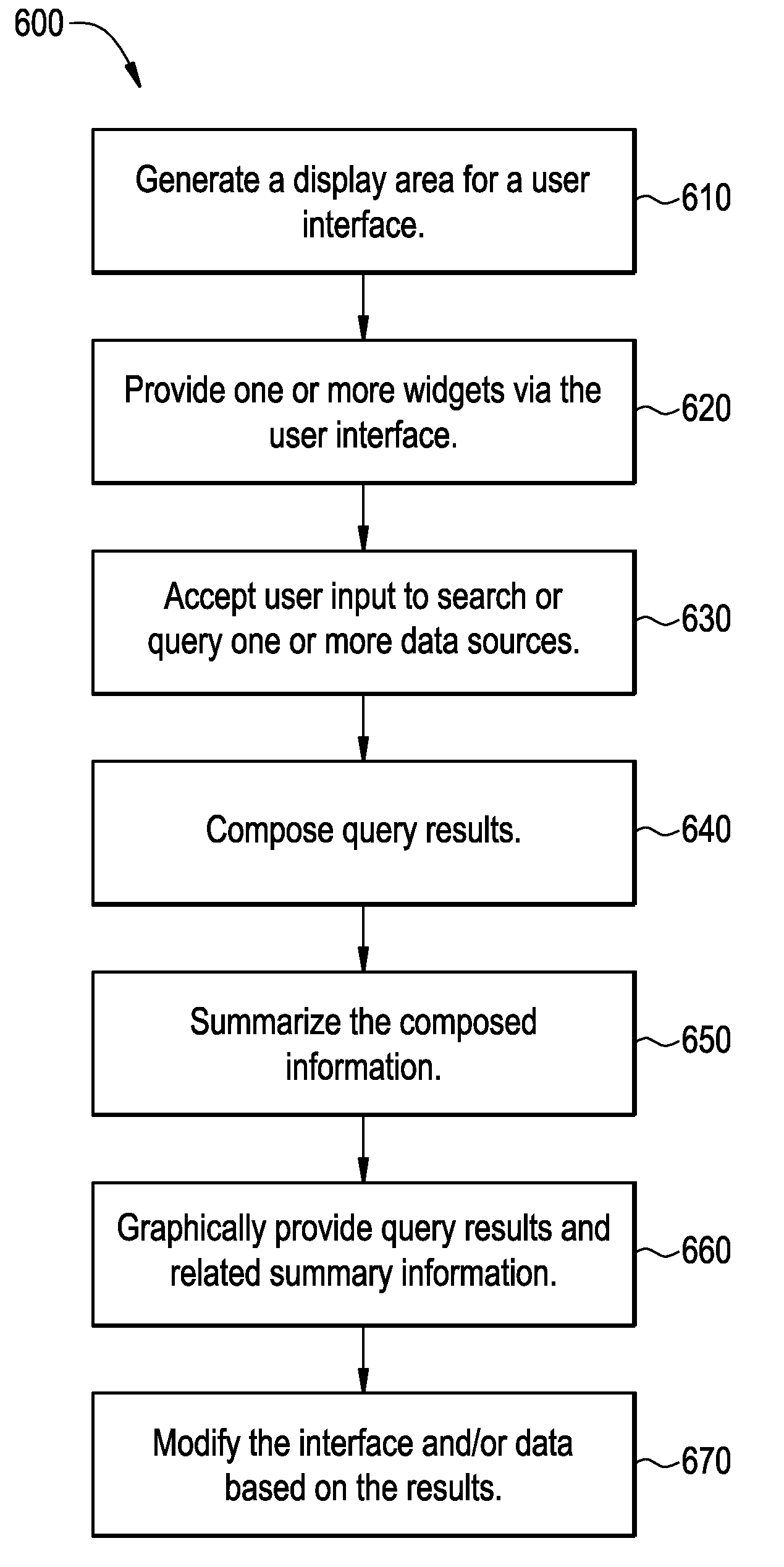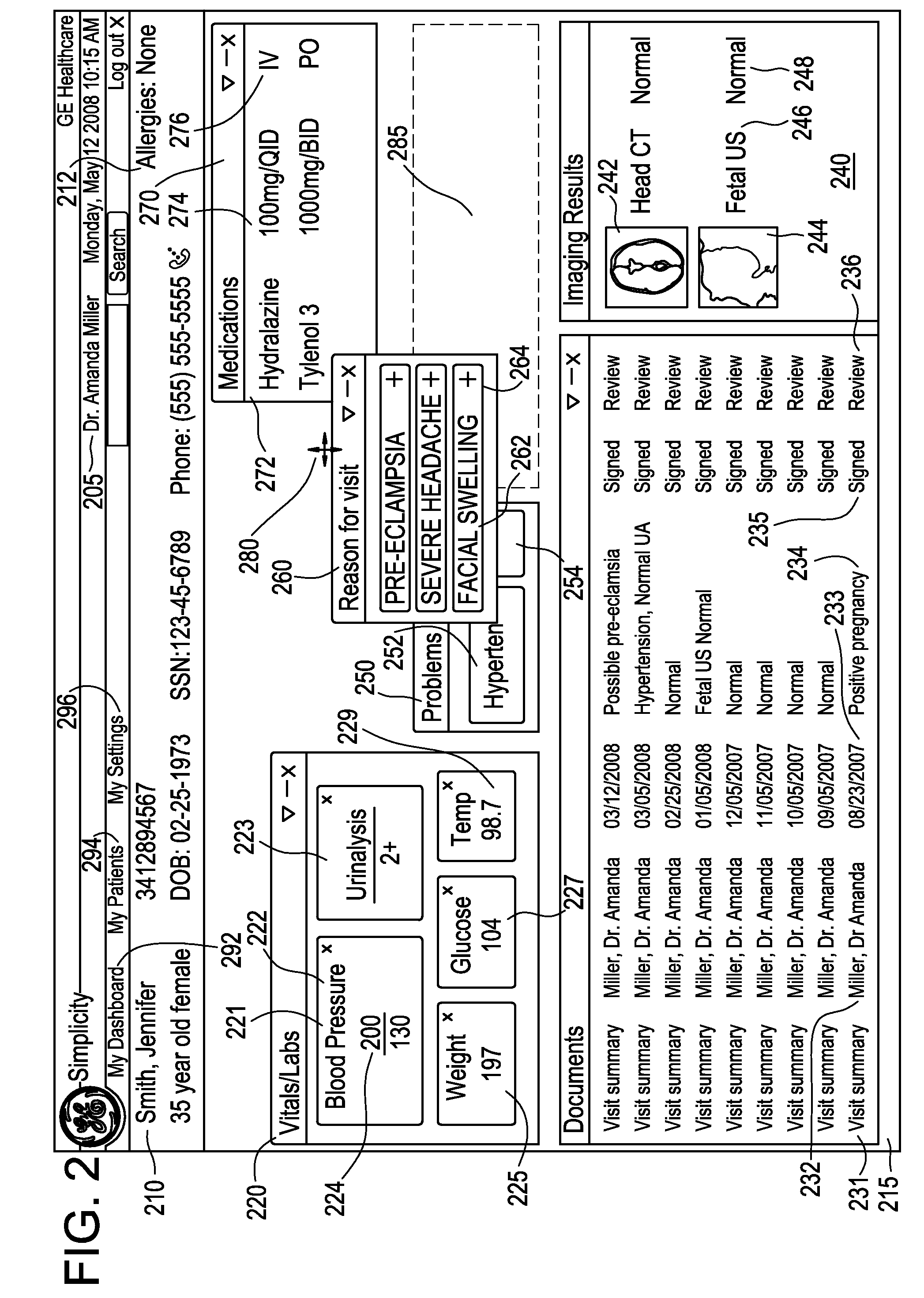Adaptive user interface systems and methods for healthcare applications
a user interface and application technology, applied in the field of healthcare applications, can solve the problems of not being able to tell the user which data elements are important, not being able to effectively present information to physicians and other healthcare providers at the point of care, and not being able to simply browse through data, etc., to achieve the effect of facilitating access by the end user
- Summary
- Abstract
- Description
- Claims
- Application Information
AI Technical Summary
Benefits of technology
Problems solved by technology
Method used
Image
Examples
Embodiment Construction
[0029]Certain embodiments provide access by an end user to information across enterprise systems. Certain embodiments provide a search-driven, role-based, workflow-based, and / or disease-based interface that allows the end user to access, input, and search medical information seamlessly across a healthcare network. Certain embodiments offer adaptive user interface capabilities through a work-centered interface tailored to individual needs and responsive to changes in a work domain. Certain embodiments introduce an adaptive, work-centered user interface technology software architecture, which embodies two novel concepts. The first concept is to use an ontology modeling approach to characterize a work domain in terms of “work-centered” activities as well as computation mechanisms to achieve an implementation that supports those activities. The second concept is to provide adaptive interaction, both user directed and automated, in work-centered characterization and presentation mechanis...
PUM
 Login to View More
Login to View More Abstract
Description
Claims
Application Information
 Login to View More
Login to View More - R&D
- Intellectual Property
- Life Sciences
- Materials
- Tech Scout
- Unparalleled Data Quality
- Higher Quality Content
- 60% Fewer Hallucinations
Browse by: Latest US Patents, China's latest patents, Technical Efficacy Thesaurus, Application Domain, Technology Topic, Popular Technical Reports.
© 2025 PatSnap. All rights reserved.Legal|Privacy policy|Modern Slavery Act Transparency Statement|Sitemap|About US| Contact US: help@patsnap.com



